Blog Posts Tagged Heat Transfer Module
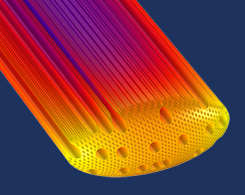
6 Ways Engineers Are Using Simulation to Help the Environment
Energy-efficient buildings and appliances. Safe nuclear waste storage. Well-preserved freshwater lakes. These are just a few examples of how simulation is being used to help the environment.

Verifying a HAMSTAD Benchmark for an Insulated Roof Model
Heat and moisture (HAM) transport is an important area of study for building materials and structures, as it can affect the rate and coverage area of mold growth.
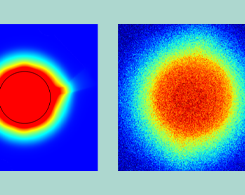
Developing a Silicon MEMS Chip for On-Demand DNA Synthesis
The development of genome editing tools like CRISPR-Cas9 has increased the demand for DNA synthesis technology. Researchers are creating a DNA synthesis platform to broaden horizons in the field.
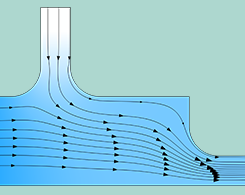
How to Simulate Control Systems Using the PID Controller Add-In
A PID controller can be used in a variety of industries. This blog post demonstrates how a PID controller add-in can be easily incorporated in two simulation examples.
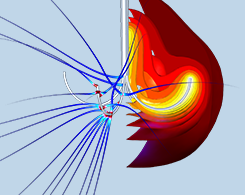
Heat Transfer in Biological Tissue with Thermal Damage Analysis
Hepatic tumor ablation using radiofrequency heating, microwave coagulation therapy, and other cancer treatments can be studied by modeling the electromagnetic heating of biological tissues.
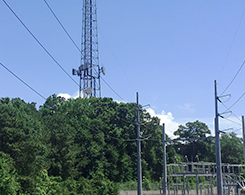
10 Real Uses of COMSOL Multiphysics® in the Power Industry
Minimizing transformer noise, planning underground cable networks, and managing a power grid. Keep reading for more real-world examples in which simulation is used in the power industry.
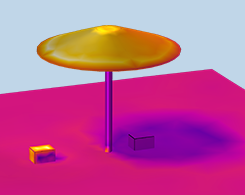
The Importance of Thermal Radiation in Your Models
Conduction and convection tend to get more attention from simulation engineers, but radiation plays an important role as well. Learn how (and why) to account for thermal radiation in your models.
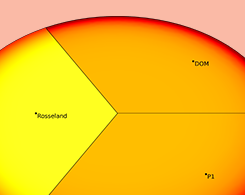
4 Methods to Account for Radiation in Participating Media
The discrete ordinates method, P1 approximation, Rosseland approximation, or the Beer–Lambert law: Which should you use to analyze heat transfer in participating media?

Heat Transfer with Radiation in Participating Media and the Discrete Ordinates Method
Here’s your complete guide to the discrete ordinates method, quadrature sets, and how to model the interaction between radiation and a participating or absorbing medium.
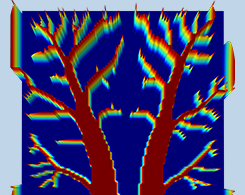
Comparing Optimization Methods for a Heat Sink Design for 3D Printing
When designing a heat sink, is it better to use parametric or topology optimization? When manufacturing said design, does 3D printing produce the best result, or a conventional method?

Calculating the Heat Transfer Coefficient for Flat and Corrugated Plates
What is the heat transfer coefficient, and how do you calculate it? This blog post includes a theoretical background and demonstration of 2 examples in COMSOL Multiphysics®.
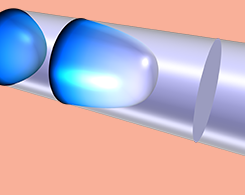
Hydrodynamic Thermal Transport in the Kinetic-Collective Model
F. Xavier Alvarez from the Universitat Autònoma de Barcelona (UAB) discusses using COMSOL Multiphysics® to model heat transfer at the nanoscale and better understand transport processes.

Simulation Applications Enable Digitalization at ABB Traction Motors
Here’s a real-world example of optimizing R&D processes with COMSOL Server™: At ABB Traction Motors, engineers use simulation applications to analyze CFD and heat in electric motor designs.
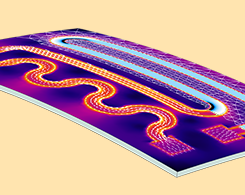
Designing Heating Circuits with Multiphysics Simulation
The electronic message boards you see on the highway contain heating circuits. Their design is a truly multiphysics problem involving heat transfer, structural mechanics, and electromagnetics.
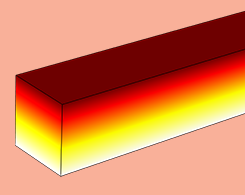
Improving Fire Protection for Structures via Building Physics Simulation
“I didn’t know there was a fire drill scheduled for today,” you say to a colleague. “There isn’t,” they respond. Then you smell smoke. Continue the story in this blog post on building physics.

Keynote Video: Optimizing Cable Systems via Simulation
The length of cable for a mode of transportation depends on the amount of passengers, so a car uses ~5 km of cable and a cruise ship uses ~5000 km. Learn more about cable system design here.

Keynote Video: EPFL Uses Simulation to Design a Hyperloop Pod
The EPFLoop team used multiphysics simulation to design the aeroshell, pressure vessel, and braking system of their hyperloop pod for the SpaceX 2018 competition. Get an inside look here.
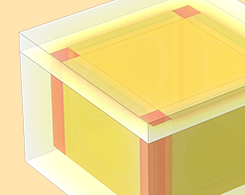
Maintaining Cold Temperatures in an Isothermal Box with Simulation
Heat transfer modeling is more accurate when you can input historical climate data from ASHRAE, such as in this example of an isothermal box designed to transport perishable items and medicine.

Evaluating a Fire-Resistant Overpack for Nuclear Waste
Confinement system overpacks are used to safely store radioactive waste. Sogin uses heat transfer modeling to design safe and reliable overpacks that are resistant to fire.

Keynote Video: Simulating the Drying of Cellular Foods
How about them (dried) apples? Empa uses multiscale modeling to analyze the dehydration of soft cellular food products, such as dried fruit, and scale their processes for mass production.

Keynote Video: Designing Improved Heart Pumps with Simulation
Abbott Laboratories designed “the most complex machine ever implanted into a human being” — an LVAD for heart failure patients — using multiphysics modeling. The result? Saved lives.
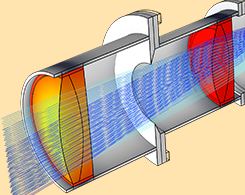
How to Perform a STOP Analysis with COMSOL Multiphysics®
Interested in structural-thermal-optical performance (STOP) analysis? We go over the theory, background, and how to perform such an analysis in the Ray Optics Module.

Studying the Peltier and Seebeck Effects in Thermoelectric Devices
We go over 2 key concepts in themoelectricity, the Seebeck and Peltier effects, and how to account for them when simulating heating and cooling in thermoelectric devices.
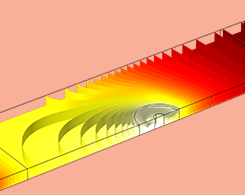
Examining Heat Transfer in a Friction Stir Welding Process
Friction stir welding (FSW) is an efficient, cost effective, and environmentally friendly process that can be optimized by studying the heat transfer involved via modeling.
